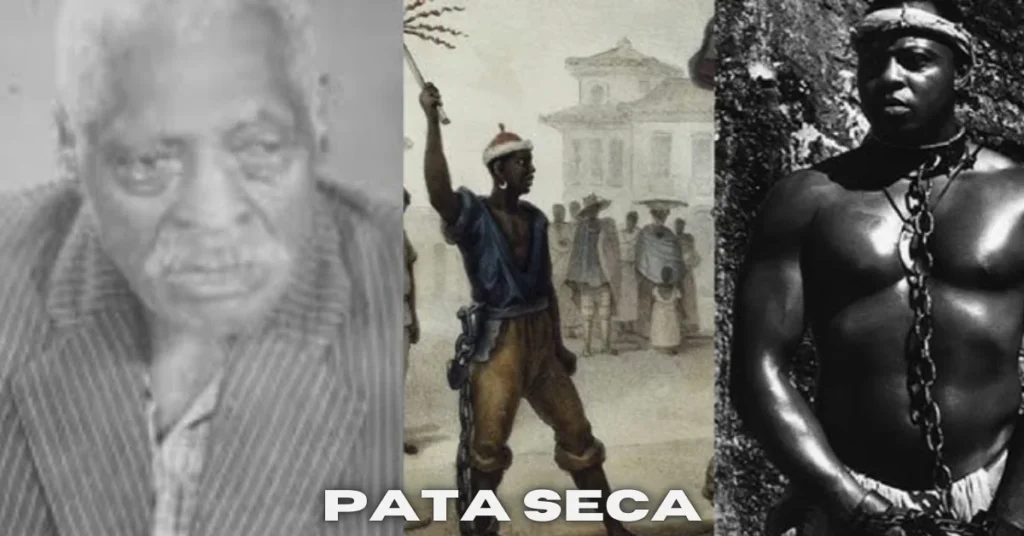Introduction to the history of slavery and forced reproduction
Slavery is a dark chapter in human history, marked by unimaginable suffering and exploitation. Among the many harrowing aspects of this brutal system was forced reproduction—a practice that stripped individuals of their autonomy and reduced them to mere commodities. One figure who embodies this painful legacy is Pata Seca, a black slave whose life story reveals the grim realities faced by those subjugated under slavery’s cruel yoke. His experience sheds light on the broader impact of enforced breeding practices not only on enslaved men but also on women who bore the brunt of such atrocities. As we delve into Pata Seca’s narrative, we confront difficult truths about how these historical injustices continue to echo through generations today. Join us as we unravel these threads woven into our past and explore the lasting scars left behind by forced reproduction during slavery.
The story of Pata Seca and his experience as a black slave
Pata Seca was a name whispered among the enslaved, evoking tales of resilience and tragedy. Born into bondage, his life was marked by the harsh realities faced by many black slaves. He didn’t just endure; he became a symbol of forced legacy.
His story reveals how slave owners exploited him for reproduction. Pata Seca fathered numerous children, often without choice or consent. Each child represented both hope and heartache—a continuation of suffering wrapped in human potential.
Through it all, Pata Seca’s spirit shone brightly amidst despair. His strength inspired those around him to dream of freedom and dignity despite their circumstances. The pain endured under oppressive systems shaped identities that resonate even today.
The echoes of his journey remind us that behind every statistic are real lives filled with stories longing to be told—stories like that of Pata Seca who lived through unimaginable hardships yet left an indelible mark on history.
The impact of forced reproduction on enslaved women and men
Forced reproduction had profound effects on enslaved women and men, shaping their lives in ways that are hard to fathom. For women, the act of being compelled to bear children often stripped them of agency over their own bodies. Pregnancy was not a choice; it was an obligation.
This relentless cycle commodified human life. Enslaved mothers faced the constant threat of having their children sold away from them, deepening emotional trauma. They were expected to rear future generations into slavery—a painful legacy they had no say in creating.
Men also suffered under this oppressive regime. Many were coerced into fathering numerous children with different partners, reducing their relationships to transactional encounters devoid of love or intimacy. This created fractured family structures and long-term psychological scars.
The impact rippled through communities, eroding bonds and instilling a pervasive sense of hopelessness among those who sought connection amidst systemic violence.
Debunking common myths about slavery and reproduction
Many people hold misconceptions about slavery, especially regarding the reproductive aspects. One common myth is that enslaved women were content with their roles as breeders. The reality was often filled with trauma and coercion.
Another belief suggests that all offspring of enslaved individuals naturally belonged to slaveholders. In truth, many children faced a life of separation from family members sold off at auction or assigned to different plantations.
There’s also a stereotype that all enslaved men willingly participated in forced reproduction. This overlooks the psychological toll on these individuals who had no agency over their bodies or futures.
Additionally, some narratives romanticize the idea of mixed-race heritage resulting from slavery, ignoring the violent context behind those unions. Such myths trivialize the real pain endured by countless families torn apart by this brutal system. Understanding these truths allows for deeper empathy and awareness of history’s complexities.
How the legacy of forced reproduction still affects descendants today
The legacy of forced reproduction during slavery reverberates through generations. Descendants carry the weight of trauma etched into their ancestral history. This often manifests as a profound sense of loss and identity struggles.
Many individuals grapple with the psychological scars left by their forebears’ experiences. The narratives are not just stories; they shape perspectives on family, community, and personal worth.
Economic disparities also trace back to this dark past. Families affected by these historical injustices still face systemic inequalities today that hamper upward mobility.
Additionally, cultural disconnection persists among descendants who seek to reclaim lost heritage. They strive to understand their roots while navigating modern societal challenges influenced by that painful history.
Recognizing these impacts is essential for healing and fostering resilience in future generations.
Steps towards acknowledging and healing from this dark part of history
Acknowledging the painful history of forced reproduction during slavery is crucial. Education plays a key role in this process. Schools and communities should incorporate comprehensive histories that include stories like that of Pata Seca, allowing students to understand the depth of suffering endured.
Public memorials can serve as powerful symbols of remembrance. By honoring those impacted, we create spaces for reflection and dialogue. These memorials can foster connections between different generations, bridging gaps created by time and silence.
Engaging descendants in discussions about their heritage also promotes healing. Sharing personal narratives brings visibility to ongoing struggles with identity and systemic inequalities.
Supporting reparative justice initiatives helps address historical wrongs. This not only acknowledges past injustices but also paves the way for meaningful change today. The journey toward healing requires collective effort and understanding from all members of society.
Conclusion: Remembering Pata Seca and all those affected by forced reproduction during slavery
The story of Pata Seca is a poignant reminder of the dark realities that shaped the lives of countless individuals during slavery. His experience as a black slave forced into fatherhood highlights the deep scars left by systemic oppression and exploitation. This legacy of forced reproduction did not just impact those who lived through it; its effects ripple through generations.
Remembering figures like Pata Seca allows us to honor their suffering and resilience. It encourages discussions about historical injustices while also prompting reflection on how we can address contemporary issues stemming from this painful past. Acknowledging these stories is vital in our journey toward understanding, healing, and ultimately fostering a more equitable future for all descendants affected by such atrocities.
As we reflect on Pata Seca’s life, let us commit to remembering those silenced by history. Their experiences serve as important lessons that remind us of our shared humanity and the urgent need for compassion in confronting ongoing challenges related to race, heritage, and identity today.
FAQs
Who is “Pata Seca”?
Pata Seca, born Roque José Florêncio, was a black slave in Brazil known for being exploited for forced reproduction, fathering over 200 children.
What role did Pata Seca play in the history of slavery?
He symbolizes the brutal practice of enforced breeding, highlighting the systemic exploitation of enslaved individuals during slavery in Brazil.
How did forced reproduction impact enslaved women?
Enslaved women were stripped of their autonomy, often forced to bear children without choice, resulting in deep emotional trauma and a cycle of commodification.
What myths about slavery and reproduction are debunked in the article?
Common myths include the notion that enslaved women were content with breeding roles and that all offspring automatically belonged to slaveholders, overlooking the trauma involved.
Why is remembering Pata Seca important today?
His story reminds us of the historical injustices faced by enslaved individuals and encourages discussions about ongoing systemic inequalities and the need for healing.







